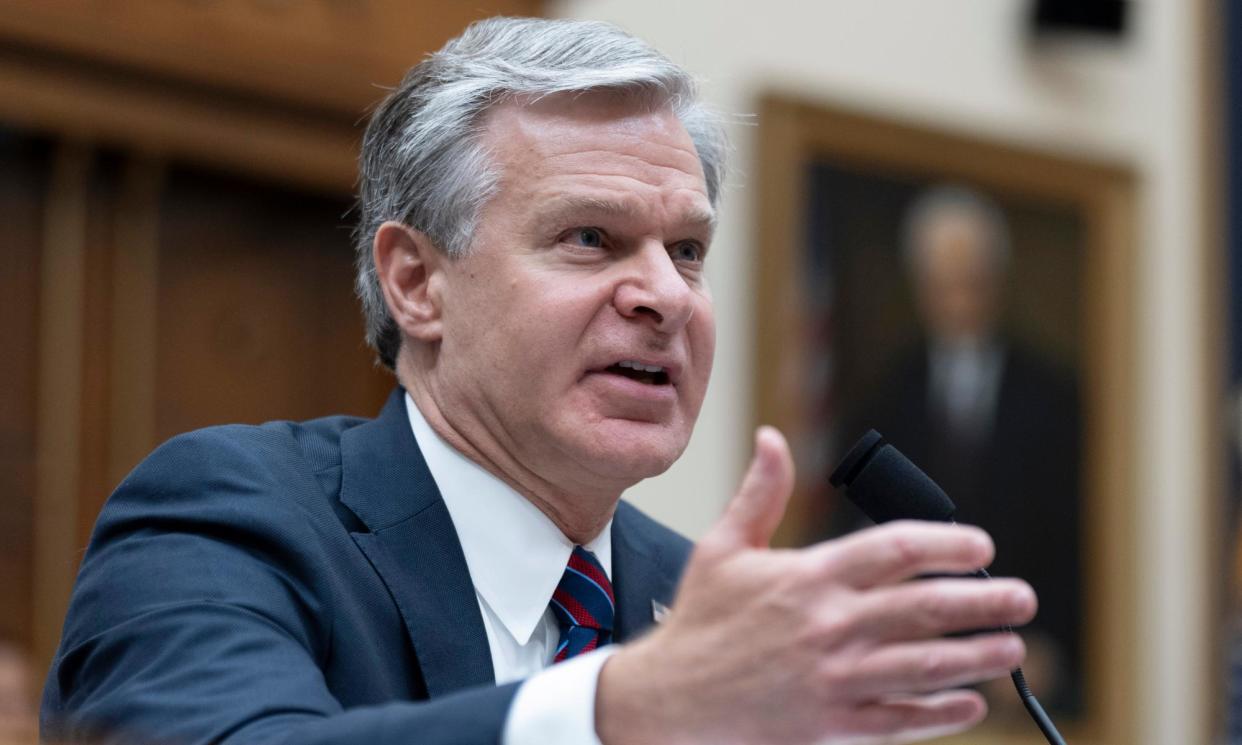Shooter who tried to kill Trump Googled JFK assassination, FBI chief says

The FBI director told the House judiciary committee that the shooter who attempted to assassinate Donald Trump just 11 days ago searched online for information about the 1963 assassination of John F Kennedy.
Christopher Wray testified before the committee on Capitol Hill, at the House of Representatives, where the Republicans are in the majority.
Related: Secret Service urging Trump to stop outdoor rallies after shooting – report
Wray told lawmakers that the suspect who tried to kill Trump earlier this month used the internet to research how Lee Harvey Oswald killed Kennedy in Dallas 61 years ago.
Wray said that starting on about 6 July this year, Thomas Matthew Crooks, the shooter who fired at Trump, injuring his ear during a campaign event in Pennsylvania, “became very focused on President Trump and his rally” and conducted a Google search that asked: “How far away was Oswald from Kennedy?”
The FBI director added that the search was “obviously significant as to [the shooter’s] state of mind”. He also said the search took place on the same day Crooks registered to attend the Trump rally near Butler, Pennsylvania.
Crooks was killed by government snipers on 13 July after he fired eight shots from an assault rifle, hitting Trump, killing a rally attendee and injuring others, aiming from a rooftop some distance away.
Oswald shot Kennedy on 22 November 1963 by firing from a book depository as the president’s motorcade passed by. The Warren Commission report that investigated the Kennedy assassination assessed that Kennedy had been shot through the neck at a range of 174.9ft to 190.8ft, or about 53.3m to 58.1m.
Trump’s campaign said the Republican nominee was doing “fine” after the shooting, which Trump said pierced the upper part of his right ear. Wray said his understanding was that either a bullet or some shrapnel “is what grazed his ear”.
Wray pledged that the FBI would “leave no stone unturned” in its investigation.
Despite the new information about the shooter’s focus on the Kennedy assassination, Wray said that the FBI had yet to find any solid indication of his motive or ideology.
“It does appear he was interested in public figures more broadly,” he said.
Wray described the “massive resources” the FBI was devoting to the investigation into the assassination attempt. More than 400 interviews have been conducted, he said, and several hundred agents and other staff are actively involved.
The FBI chief gave new details on how the gunman may have eluded arrest, despite reports that he had been identified by law enforcement as suspicious an hour before he opened fire. Wray said that the AR-style rifle used in the attack may have had a collapsible stock, making it easier to conceal.
He also confirmed that the shooter appeared to have used a drone about two hours before the attack, to scope out an area about 200 yards from the stage where Trump was scheduled to speak. The drone was found in the gunman’s car, along with two explosive devices.
A third explosive device was discovered during a search of Crooks’s home. The shooter was found to have had on his body a transmitter for the bombs, but the devices were not turned on, so it is unlikely he could have detonated them from the roof where he opened fire on Trump.
Receipts also found on the shooter’s body indicated that he had bought a 5ft ladder, but the investigation suggests he did not use it to get up to the roof where he carried out the attack. He appears to have scaled the building by climbing up vertical pipes.
Wray described Crooks as a “fairly avid shooting hobbyist”. He reportedly belonged to gun clubs and in the days before the shooting went to several gun ranges.
On the day of the shooting itself, Crooks went to a shooting range and fired an AR-style rifle. Wray said the weapon was probably the same one that he used in the assassination attempt.
